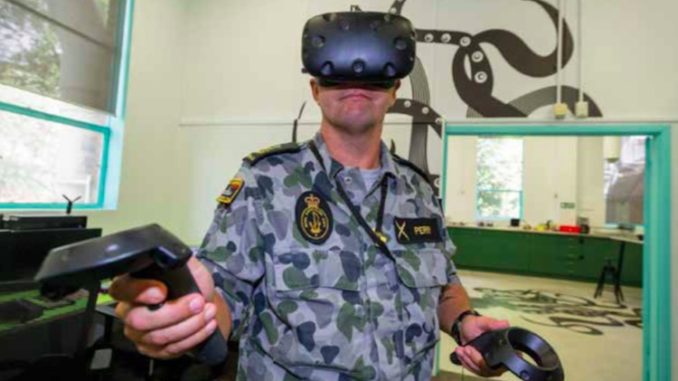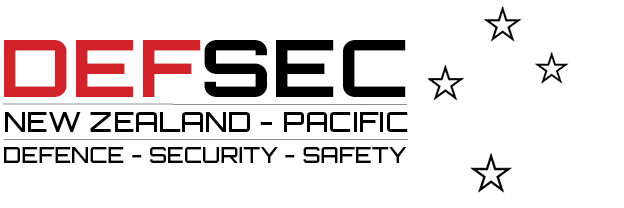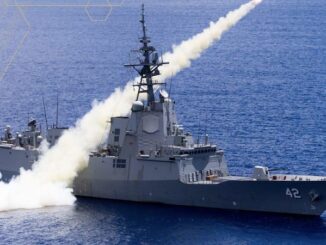
Captain Greg Laxton CSC RAN will be presenting at the 2018 NZDIA Forum. In this exclusive interview, he talks with editor Nicholas Dynon about failure-tolerant spaces, leaders worth following, and changing culture.
I first interviewed Captain Greg Laxton for an article in the April 2016 inaugural issue of Line of Defence that showcased the Guided Missile Frigate Systems Program Office’s (FFGSPO) adoption of relational contracting. As FFGSPO Director, he commented at the time that a relational contracting approach had driven a positive shift in behaviours focused on “keeping the FFGs capable right through to life of type.”
He’s just stepped into a new role after returning from twelve months of long service leave and having been awarded a Conspicuous Service Cross for “outstanding achievement in the field of Navy Program Management and support innovation” in the recent Australian Queen’s Birthday Honours
Coincidentally, it’s also just over a year since the opening by Chief of Navy VADM Tim Barrett of the Royal Australian Navy’s Centre for Innovation in Sydney, a collaborative project between the Department of Defence’s Capability Acquisition and Sustainment Group (CASG), the RAN, BAE Systems Australia, and Thales Australia.
The Centre is aimed at fostering a culture of innovation through encouraging the Naval community to come forward with their ideas and to test them in a failure-tolerant space.
At its launch in June 2017, Project Leader Don Moloney commented that the project had been “motivated by the leadership of the Director of Guided Missile Frigate Enterprise’s Captain Greg Laxton and the culture he’s inspired.”
LoD: A November 2016 Forbes article quoted you as saying that “relational contracting is now influencing the future of commercial and contractual relationships in Australia’s Defence arena.” 18 months on, how is this tracking?
GL: CASG have picked it up and run with it. They’ve taken away the term ‘relational contracting’ and replaced it with ‘collaborative contracting’, and they released a ‘best practices’ guide mid last year.
Maritime Systems Division (MSD) has been active in rolling out the relational contracting model. This is the ‘together is better’ approach where you’re trying to foster an environment where you’re focusing on the outcome and not so much on the contractual mechanisms. You’re creating an environment where it’s safe to collaborate.
There’s also been quite a bit of interest in the Land Systems Division and Air Division. But it has to show runs on the board; people need to see it working before they decide ‘it’s better to be doing this’.
The other thing is that industry has picked it up, and that’s brilliant because that pull has been created instead of the push from the Commonwealth. Industry partners are now saying “hey, we really like this working together business. There seems to be a lot less angst and adversarial relations than in the past. Can we do more of this?”
Enjoying this article? Consider a subscription to the print edition of Line of Defence.
LoD: The RAN Centre for Innovation is said to have been “motivated by the leadership of the Director of Guided Missile Frigate Enterprise’s Captain Greg Laxton and the culture he’s inspired.” Can you talk a bit about this culture?
GL: I’m quite excited about what’s happened in this space. The genesis for the Centre for Innovation was a trip to the US where I attended an FFG forum of sorts and was invited to visit a fab lab’, or fabrication laboratory. I also had a good friend in South Australia who got me really excited about this space, and I looked at Tonsley Park there, home to an old Mitsubishi factory site where they’ve created a big innovation precinct.
I put the challenge out there to a member of my team, Don Maloney, who’s passionate about all things innovation – and he ran with it. I championed the concept, but it was Don Maloney who was the driving force behind it, and he has created an amazing environment.
The idea was to create a safe environment to innovate, because if you think about it failure tends to be touted as not being an option – and for good reason. In a wartime situation, failure’s bad. But innovation doesn’t work if you can’t try, fail, learn from your mistakes, try again, try again and eventually succeed. That was the real concept behind the Centre.
All the feedback I’ve had so far is that people have really embraced it. What they’re saying is that once they’ve actually matured the operational model, they’re looking at doing more of these Centres of Innovation across Australia.
LoD: The Centre for innovation is a bricks-and-mortar crystalisation of what’s come out of the FFG Enterprise. But I imagine that the underlying substructure to that is the more difficult cultural change that needs to occur. What did this involve?
GL: In New Zealand is a wonderful chap called Michael Henderson, a corporate anthropologist – one of the very few in the world. What he does is go around corporations and business organisations and looks at their culture. What Michael says is “a company cannot outperform its culture.” And it is so true.
He describes four things with which you can actually lift an organisation’s culture: (i) leaders worth following, (ii) work worth doing, (iii) knowledge worth sharing, and (iv) culture worth contributing to.
In the FFG Enterprise, we put a deliberate focus on culture. You can’t control culture because culture is owned by people, but the old saying that ‘a fish rots from its head’ is true as well. If the leadership is not working, that’s going to cause issues and it will permeate down.
‘Work worth doing’ was around how we change contracts from adversarial contractual relationships, and to galvanise everybody around a single mission: delivering these ships to Navy on-time every time. And that made a big difference, because previously you’d turn up to work because you’re employed to do so, and you did your stuff, but you had no overall vision about what it was you were contributing to.
‘Leaders worth following’ was not just about the people at the top; it was all of the leaders in the organisations. We had to start training them and empowering them to think for themselves, and to understand that it was okay to try things a little differently and that they didn’t have to beat people up with a stick anymore.
In terms of ‘culture worth contributing to’, in his popular ‘Start with Why’ Ted Talk, Simon Sinek describes concentric circles that start with the ‘why’, then the ‘how’ and the ‘what’. The middle circle – the most important one – is ‘why’. It’s about telling people about your ‘why’, your reason for existing – not just about what you do and how you do it.
A key aspect of this for us in the FFG Enterprise was our Charter. With the Charter, everybody understood that the aim of what it is we’re doing: to provide materially seaworthy FFGs on-time every time.
In essence, it’s an outcomes-focused relational contract on a single piece of paper. It has no authority apart from the fact that it’s signed by all Enterprise partners, but it is an overarching intent that sits above the contracts.
We empowered our people by saying “this is your charter, if what you’re seeing from us doesn’t accord with what the charter says, hold us to account. If the charter says we want you to be innovative and think outside the box and do things differently, and then you’ve got a great idea and no one’s listening, wave it in front of us.”
Part Two of this interview will appear in the Spring issue of Line of Defence.









